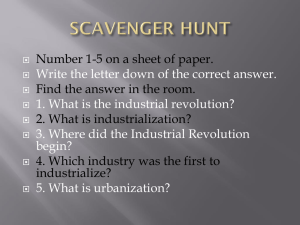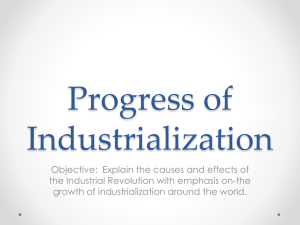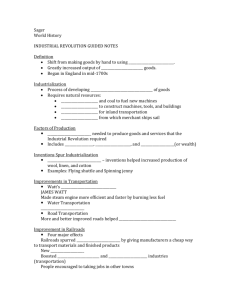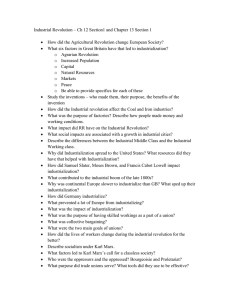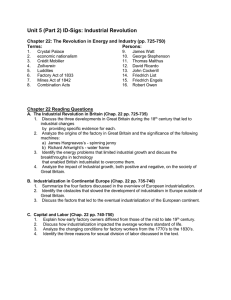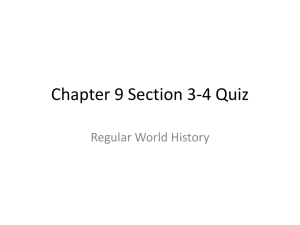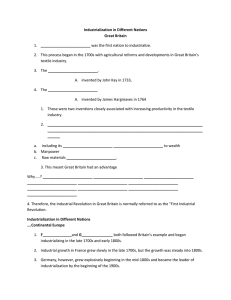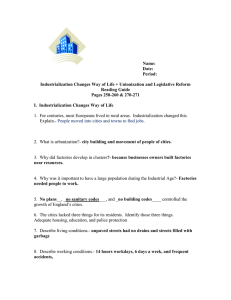Spread of Industrialization
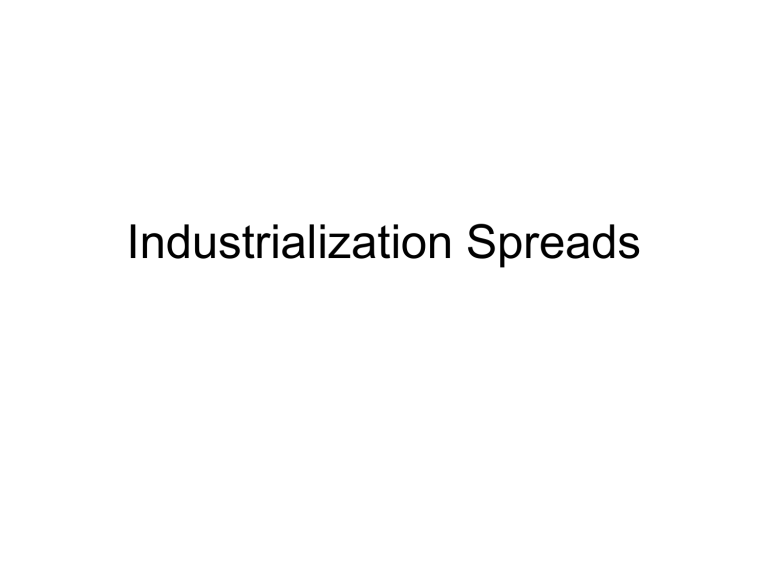
Industrialization Spreads
Agenda
1. Bell Ringer: What are the conditions in factories during the Industrial Revolution?
2. Lecture: Spread of Industrialization
3. Quick Quiz Industrialization
4. Venn Diagram, Spread of industrialism
5. Video, America: A Story of US.
6. Objectives
• HW: Students will complete a map of the
Spread of Industrialization.
United States
• Industry arrives in
1812 after Britain stops imports.
• Samuel Slater emigrated to the
United States and constructed a spinning machine.
– Britain wanted to maintain secrecy over industry.
United States (2)
• Francis Cabot Lowell would mechanize every stage in manufacturing cloth.
• Many women came to these “mill towns” to work in the factories
– 12 hour workdays, closely supervised at all times.
United States (3)
• North primarily industrial.
• From 1866 onward, technology dominates life.
• Wealth of natural resources, burst of inventions, and large population.
• Lightbulb, telegraph invented.
• Expanding railroads led to larger cities.
The Corporation
• A business owned by stockholders who share in the profits.
• Big businesses made large profits through cutting costs.
• Examples: Standard
Oil, Carnegie Steel.
Beginnings in Belgium
• William Cockerill carried secret plans for building spinning machines for textiles.
• It would eventually dominate in machinery and engines.
• Europe would industrialize slowly because of Revolution.
Germany
• Early 1800s, revolution and isolation hinder industrialization.
• 1835- the country copies the British model.
• Children sent to schools in Britain to learn their industrial methods.
• Railroads aided their progress as a military giant as well.
European Expansion
• Pockets of industrialization rose throughout Europe.
• France had major growth after 1850, with a government-constructed railroad.
• Spain and Austria-
Hungary took many years to industrialize because of its geography.
Worldwide Impact
• Shifted balance of power.
– More industrialized = more weapons.
• They worked together for materials and finished goods, but the more powerful country would exploit the poor one.



